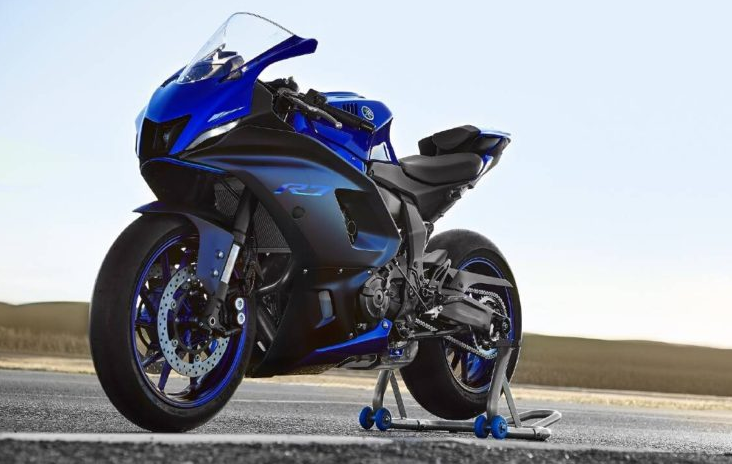Amaha YZF-R6 Lowering Link – 5 Levels is not a correct line, the correction is Yamaha YZF-R6 Lowering Link – 5 Levels. Yamaha YZF-R6 Lowering Link – 5 Levels allow riders to adjust their bike’s height to achieve better comfort and stability, especially for those with shorter inseams. Whether you’re looking to enhance your riding confidence or simply want a more tailored fit on your beloved R6, understanding how these lowering links work is key. Dive in as we explore the benefits, options available, and expert tips on choosing and installing an yamaha yzf-r6 lowering link – 5 levels deep!
Benefits of using a lowering link
Using a lowering link on your Yamaha YZF-R6 can transform your riding experience. One of the primary benefits is enhanced stability. A lower center of gravity helps improve handling, making it easier to navigate corners and maintain balance.
Another advantage is increased confidence for shorter riders. Lowering the bike allows them to plant their feet firmly on the ground when stopped. This added security can make a significant difference during stops or slow maneuvers.
Additionally, a lowering link can positively impact comfort levels. With better ergonomics tailored to individual height, you may find that long rides become less fatiguing.
Moreover, customizing ride height will allow more precise suspension adjustments. Fine-tuning front and rear settings enhances performance based on riding style and conditions.
Aesthetics play a role as well; many riders appreciate the aggressive stance achieved through lowering links, adding visual appeal to their sportbike.
Different types of lowering links available for the Yamaha YZF-R6
When it comes to lowering links for the Yamaha YZF-R6, you have several options tailored to your riding style and needs.
Adjustable lowering links are a popular choice. They allow you to modify the height in increments, giving flexibility based on your preferences or conditions.
Fixed lowering links offer a straightforward solution. These provide a specific drop that can enhance stability but don’t permit any adjustments once installed.
Heavy-duty models are also available for riders who prioritize durability and performance under stress. They’re designed to withstand rigorous use while maintaining safety.
Some brands may offer lightweight versions geared towards racing enthusiasts looking for optimal performance without compromising handling dynamics. Each type has its distinct advantages, so assessing what suits your ride is crucial before making a decision.
How to choose the right level of lowering for your bike
Choosing the right level of lowering for your Yamaha YZF-R6 can significantly impact your ride. Start by assessing your riding style and comfort needs. If you’re primarily commuting or cruising, a subtle drop may suffice.
Next, consider your inseam length. Riders with shorter legs often benefit from a more substantial lower setting to improve foot reach without compromising handling.
Think about how lowering affects geometry and stability. A significant drop might enhance accessibility but could also alter cornering dynamics slightly.
Test different levels if possible before settling on one. Some aftermarket providers offer adjustable links that allow you to experiment easily.
Remember that personal preference plays a key role in this decision-making process too. Your ultimate goal is to achieve both comfort and performance tailored specifically for you.
Step-by-step guide on installing a lowering link on your Yamaha YZF-R6
Installing a lowering link on your Yamaha YZF-R6 is a straightforward process. Start by gathering the necessary tools: a socket set, torque wrench, and possibly a bike stand for stability.
First, lift the bike using the stand to relieve pressure from the suspension. Then, remove both rear bolts connecting the shock absorber to the swingarm. This will allow you to detach the stock link.
Next, take your new lowering link and attach it where the old one was removed. Make sure it’s securely fastened before moving on.
Reattach your shock absorber with its bolts while ensuring they are tightened to manufacturer specifications using your torque wrench.
Lower your bike back down and check for proper clearance and alignment in all components. Adjust if necessary before taking it for a ride!
Tips for maintaining and adjusting your lowered bike
Maintaining your lowered Yamaha YZF-R6 is crucial for optimal performance and safety. Regularly check the suspension settings after installing the lowering link. Adjusting preload can help find that perfect balance between comfort and handling.
Tire pressure plays a significant role too. Ensure your tires are inflated to the recommended levels; this provides better contact with the road, especially when riding at lower heights.
Keep an eye on chain tension and alignment as well. Lowering links can affect these aspects, leading to potential issues if not monitored closely.
Take note of any changes in handling or ride quality over time. Frequent inspections will allow you to catch any irregularities early on, ensuring a smooth ride every time you hit the road.
Conclusion
Choosing to install a lowering link on your Yamaha YZF-R6 can significantly enhance your riding experience. With the ability to adjust the bike’s height through various levels, you gain better control and comfort tailored to your preferences. Understanding the benefits and options available empowers you as a rider.
By taking care of your lowered bike, you’re not just enhancing aesthetics but also ensuring it rides smoothly for miles ahead. Embrace this upgrade with confidence; you’ll find that riding can be an entirely new adventure with a properly adjusted Yamaha YZF-R6 using a lowering link across its five versatile levels.

